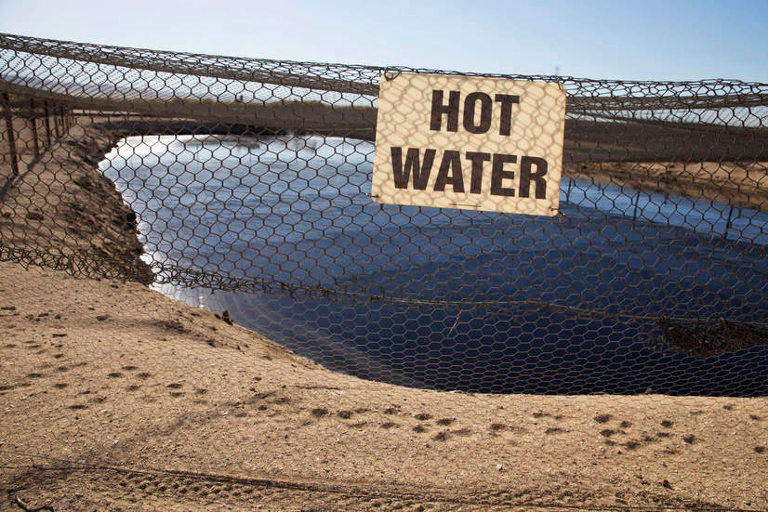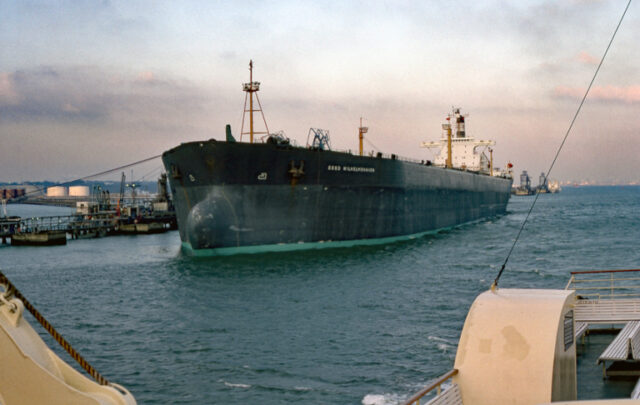The U.S. Environmental Protection Agency (EPA) has clearly documented the multiple risks — despite repeated dismissals from the oil and gas industry — that hydraulic fracturing (fracking) poses to drinking water supplies. However, the tables may be turning: Water itself now poses a risk to the already failing financial model of the American fracking industry, and that is something the industry won’t be able to ignore.
The U.S. is setting new oil production records as horizontal drilling and fracking open up shale deposits in places like North Dakota and Texas.
Fracking is based on the “hydraulic” process of using pressurized liquid to shatter shale rock to let the oil and gas inside escape. And while that liquid is a mixture of many hazardous chemicals, it is mostly water. And acquiring that water and then properly disposing of the toxic wastewater produced by fracking is becoming a big and expensive problem for the industry.
Gabriel Collins is a fellow in energy and the environment at Rice University, and in August he gave a presentation at the Produced Water Society Permian Basin 2018 event in Midland, Texas. There, Collins presented a business case for starting a large water processing company to service the fracking industry.
One sign that the fracking industry is becoming concerned about water is that there are now societies and conferences dedicated to the topic of “produced water.” Produced water is the term for the toxic water that is “produced” over the life of a fracked oil or gas well.
In a story by Bloomberg News, Collins said he didn’t believe investors were aware of the risks that water poses to the fracking industry in the Permian Basin.
“[Investors] aren’t as well apprised of some of the other risks and challenges that could be just as material, if not more so,” he told Bloomberg News. “I’d put water right at the top of that list.”
Why should water top the list of potential financial challenges facing the fracking industry? According to a study by Wood MacKenzie and reported by the Wall Street Journal, the costs of water disposal for the fracking industry could add another $6 per barrel of oil produced.
For the U.S. shale oil and gas industry, which has consistently lost money over the past decade, adding another $6 per barrel in costs represents a grim outlook.
Fracking Wastewater: Old Problem Getting Much Bigger
A new Duke University study concluded that from 2011 to 2016 the amount of water used to frack oil and gas wells rose 770 percent. But the amount of toxic wastewater produced in that same time period rose 1,440 percent.
The industry has to do something with all of that wastewater, and that costs money. To save costs on wastewater disposal, the fracking industry has taken many approaches in the past — almost all of which put the environment at risk.
Some of the industry’s efforts to get rid of wastewater at low costs have included dumping it into rivers, watering crops, de-icing roads, dumping it into the Gulf of Mexico, letting it evaporate, injecting it into drinking water aquifers, and sending it to municipal water treatment facilities not equipped to handle that type of waste. And those were just some of the “legal” ways of dealing with it. They don’t include any illegal dumping that also occurred.
In 2012 InsideClimate News reported evidence of illegal dumping of drilling and fracking waste in North Dakota, and in 2014 reported similar illegal wastewater dumping in Texas.
Dealing with toxic wastewater has always been a problem for the fracking industry, sometimes leading to illegal workarounds. A big unanswered question for the shale companies doing the fracking is whether they can ever properly handle the amount of toxic wastewater they are producing, whatever the cost is.
A 2015 Washington Post story about fracking wastewater disposal highlights the main issue in one sentence: “Currently there is no way to treat, store, and release the billions of gallons of wastewater at the surface.”
Instead of addressing this glaring issue, the industry “solution” has been to pump the toxic water back into the ground in what are known as injection wells. And while the long-term risks of this practice aren’t known, it is widely credited for the large increase in earthquakes in the areas where it is done.
But as the amount of fracking wastewater continues to increase and more of it is injected into underground wells, what will that mean for the resulting earthquakes? And what will the industry (or the communities where it operates) do about them?
While fracking pioneer and billionaire Harold Hamm, at least, would prefer to ignore the earthquake issue, injection wells present another problem which his industry does care very much about. By trying to drill and frack as many oil and gas wells as possible in a productive area, the newer wells seem to be damaging the existing producing wells via a process known as “frac hits.”
And the same thing is now happening with the wastewater injection wells.
Andrew Hunter, a drilling engineer for Guidon Energy, recently explained how injection wells can damage the producing wells, saying the situation is “getting worse.”
He also added another point that may be of interest to investors.
“I think people are afraid to talk about this problem,” Hunter said during a Houston conference focused on water. “We’re trying to get the word out to let everyone know how serious this is.”
In sum: The shale industry’s preferred solution for disposing of its huge amounts of wastewater also damages existing oil and gas production infrastructure. While also causing earthquakes. Not exactly a sustainable option, and one of the reasons for growing opposition to wastewater injection wells.
Of course, without the injection wells, the fracking industry would have to slow down or stop oil and gas production — so injection wells will stay in use.
If You Can’t Make Money, Change the Rules
In September 2016, then-presidential candidate Donald Trump addressed a group of fracking executives, explaining his position on regulation.
“I think probably no other business has been affected by regulation than your business,” Trump said. “Federal regulations remain a major restriction to shale production.”
However, the major restriction to shale production is the fact that the industry prepetually loses money. While dealing with wastewater is an expensive area for the industry, it isn’t the only one.
The Trump administration is working to loosen federal rules governing the fracking industry, which will be a boon for industry finances and a disaster for the climate and environment.
Recently, the EPA proposed rolling back regulations requiring the fossil fuel industry to monitor and fix methane leaks (a major greenhouse gas) — with big savings expected. In Texas the industry currently flares off $1 million a day of methane, greatly contributing to air pollution, because it says there aren’t enough pipelines to take the natural gas to market.
Why is this allowed? Because properly capturing the methane would cost the industry money and slow down production.
This is similar to the approach that North Dakota used toward regulations over the amount of radioactivity allowed in fracking waste. The state simply loosened the rules (and bumped up the radioactivity allowed in waste disposal) to make it easier for the oil companies working within its borders, which could then stop trucking their waste to states with higher limits.
And, of course, the Trump administration is looking at ways to roll back fracking wastewater regulations.
There is no way for the shale industry to deal with the financial issues it faces — including its water crisis — without changing the existing rules.
The headline of a recent Dallas News story on the fracking water crisis in the Permian Basin referred to it as a “Disposal nightmare.” And while the article was referring to the logistical and financial nightmare for the fracking industry — which it most definitely is — there’s another nightmare.
The industry currently has no feasible way to dispose of its wastewater using environmentally safe methods … and yet it pushes on full speed ahead.
Follow the DeSmog investigative series: Finances of Fracking: Shale Industry Drills More Debt Than Profit
Main image: Unlined waste pit for fracking wastewater in California. Credit: Sarah Craig/Faces of Fracking, CC BY-NC-ND 2.0





